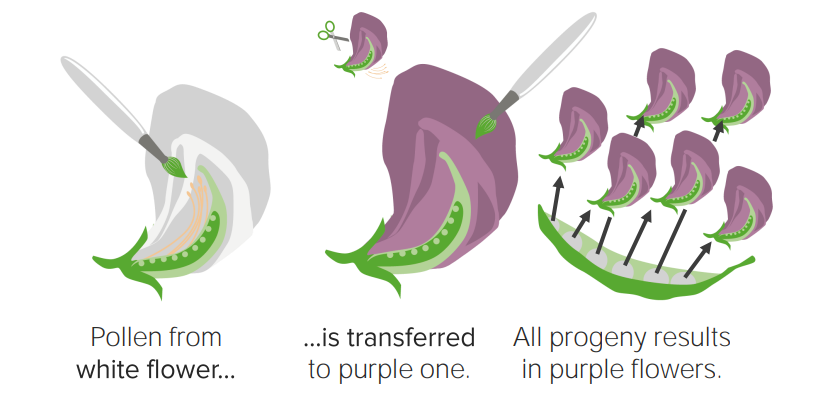Playlist
Show Playlist
Hide Playlist
Qualitative Traits: Risk Assessment
-
Slides 01 Multifactorial Inheritance MultifactorialInheritance.pdf
-
Download Lecture Overview
00:01 When we assess the risk of a qualitative trait, so these are yes or no traits, either it’s there or it’s not, we can use familial aggregation studies. What on earth is a familial aggregation study? It’s probably a little bit more familiar than it even sounds. But we presume that if an allele increases the chance of developing a disease, we’re going to expect that an affected individual to have a greater than expected number of affected relatives. So, does that make sense? The more that the condition exists in relatives, if it exists more in relatives than it does in the general population then we would have a number greater than one. We call this measure of relative risk ratio λr. When we look at λr and it equals one, we have little or no genetic impact. That means the numerator and denominator are similar and probably, mostly just a result of no genetics. If it’s greater than one, we mean there’s a possible genetic predisposition. It’s more likely in relatives than it is in the general population, lambda greater than one. Here is a chart of a number of different lambdas. By no means, you need to remember what the lambdas are, the relative risk ratios or even which ones have particularly high risk ratios. However, I think it’s pretty interesting to look at these lambda values and so do people in genetic counseling for sure. All of these are conditions that are said to have a genetic component. 01:52 We will dig into a couple of these in a little bit more detail later in a future lecture. Case control studies are another way that we can assess the genetic contribution. We compare these two unrelated individuals. 02:14 So, married couples or couples in general are a great way to do this. Generally, they’re not going to share much genetic information. However, they have shared lots of environmental conditions. We can use these controls in order to make comparisons of family versus non-family. So using this, we can say for example, in the instance of multiple sclerosis, we’re recognizing that perhaps there’s a hereditary component to that. That first degree relatives that have multiple sclerosis are likely to have relatives. 02:55 So, 3.5% of people that have multiple sclerosis are likely to have relatives that also have multiple sclerosis, first degree relatives, so siblings. Only 0.2% in the matched controls, so the married couple's kind of pool. 03:13 These are case control studies in the married couples versus familial studies in families. 03:21 Those two means are used to assess the contribution of genetics when we’re considering yes or no variables. 03:34 In the case of multiple sclerosis using those two statistics of 3.5% and 0.2%, we can say that the incidents of multiple sclerosis would be 18 times greater among siblings or first degree relatives than it would be among unrelated persons. So 18 times more likely or 18 times more risk of having it if you have a sibling that has it.
About the Lecture
The lecture Qualitative Traits: Risk Assessment by Georgina Cornwall, PhD is from the course Multifactorial Inheritance.
Included Quiz Questions
Which of the following correctly represents the relative risk ratio of a disease?
- Presence of the disease in relatives / Presence of the disease in the population
- Presence of the disease in the population / Presence of the disease in relatives
- Presence of the disease in the population / Presence of disease in first-degree relatives
- Presence of the disease in first-degree relatives / Presence of the disease in the population
- Presence of the disease in first-degree relatives / Presence of the disease in relatives
What does a relative risk ratio of 1 imply?
- The risk of the disease within a family is equal to that of the general population.
- The risk of the disease in a family is less than that of the general population.
- The risk of the disease in a family is more than that of the general population.
- The risk of disease in a family is equal to 1.
- The risk of disease in a family is 100%.
In patients with schizophrenia, 4% of first-degree relatives had schizophrenia while only 0.2% of first-degree relatives of matched controls exhibited schizophrenia. How many more times greater is the incidence of schizophrenia in siblings as compared to unrelated people?
- 20x
- 0.05x
- 18x
- 5x
- 2x
Customer reviews
5,0 of 5 stars
| 5 Stars |
|
5 |
| 4 Stars |
|
0 |
| 3 Stars |
|
0 |
| 2 Stars |
|
0 |
| 1 Star |
|
0 |






